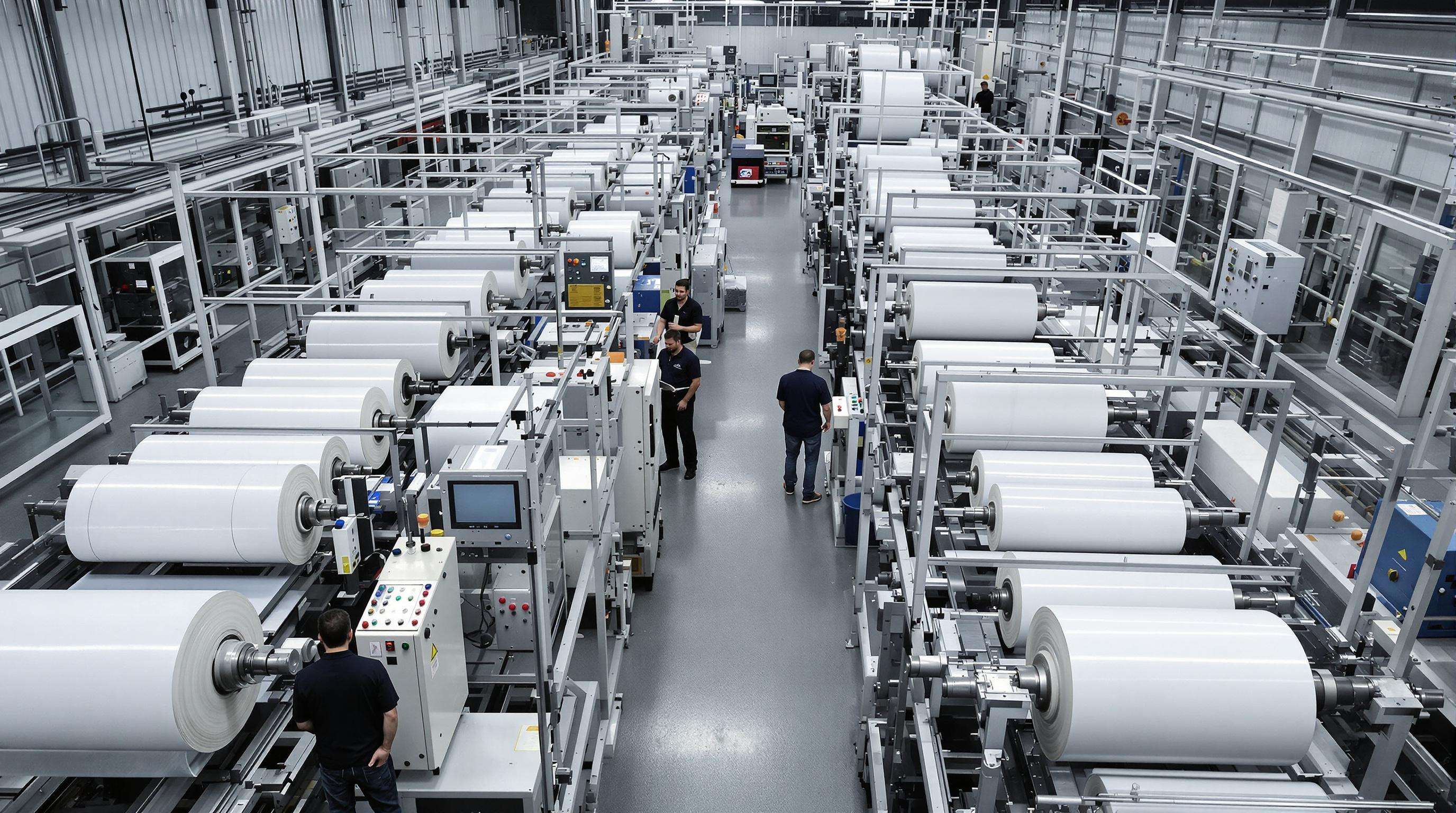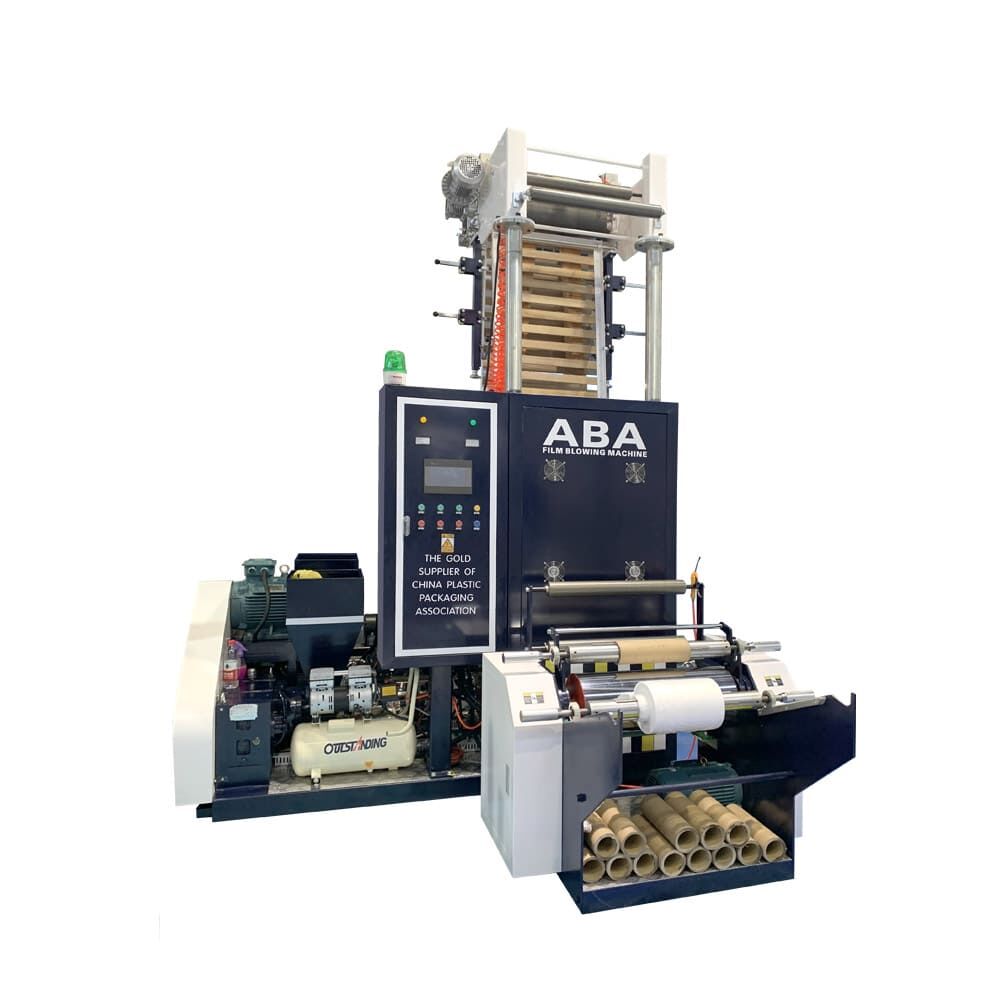In the field of plastic packaging, with the continuous improvement of film performance requirements, multi-layer co-extrusion film blowing technology has become the mainstream. Among them, ABA and ABC film blowing machines are the most common three-layer co-extrusion structure types. Although both are three-layer structures, there are significant differences in equipment configuration, extrusion method, raw material application, film performance, etc. For plastic bag manufacturers, a correct understanding of the difference between these two models will help to choose the most suitable equipment according to production needs.
1. What are ABA and ABC Film Blowing Machines?
1.1 ABA Film Blowing Machine Structure
ABA film blowing machine adopts twin-screw three-layer co-extrusion technology, and its structure is:
Layer A: outer layer (fed by the first host)
Layer B: middle layer (fed by the second host)
Layer A: inner layer (same as the outer layer, fed again by the first host)
That is, the two layers of A share one extrusion host, and the B layer is fed by another host.
1.2 ABC Film Blowing Machine Structure
ABC film blowing machine adopts three-screw three-layer co-extrusion technology, and the structure is:
Layer A: outer layer (fed by the first host)
Layer B: middle layer (fed by the second host)
Layer C: inner layer (fed by the third host)
Each layer is fed by an independent host, and the three layers of materials can be completely different and freely matched.
2. Comparison of Structure and Configuration
| Project | ABA film blowing machine | ABC film blowing machine |
| Number of hosts | 2 | 3 |
| Layer structure | Symmetrical (A-B-A) | Asymmetric (A-B-C) |
| Material combination | The same material is used for the outer layer and the inner layer | Three different materials can be used for the three layers |
| Control difficulty | Relatively simple, easy to adjust | Higher precision, more complex adjustment |
| Symmetry of the membrane | Strong symmetry, suitable for vest bags and other bag types | Stronger adjustable performance and richer functions |
3. Differences in Performance and Application
3.1 ABA Film Blowing Machine:
Advantages
- Simple structure and low investment cost;
- The outer layer and the inner layer share the same raw material, saving costs;
- Suitable for the combination of recycled materials + new materials, taking into account strength and cost;
- Easy to operate and maintain.
Typical Applications:
- Supermarket shopping bags (vest bags);
- Roll bags, garbage bags;
- Daily packaging films.
- Especially suitable for mass production of products with moderate film performance requirements and cost sensitivity.

3.2 ABC Film Blowing Machine:
Advantages:
- Three layers of independent feeding, free combination of different functional materials;
- Outer layer can be designed with high light/heat resistance, inner layer heat sealing, and middle layer reinforcement;
- More suitable for the production of functional films, high barrier films, and composite film substrates;
- Film performance is more balanced and of higher quality.
Typical Applications:
- Food packaging film (such as composite bag base film);
- Medical packaging, agricultural film;
- Electronic industrial film, frozen bags, high barrier bags.
- Suitable for high-end markets and diversified, high-performance film needs.
4. How to Choose: ABA or ABC?
- If you are a small and medium-sized plastic bag manufacturer, mainly vest bags, garbage bags, and daily packaging, and pay attention to production efficiency and cost control, it is recommended to choose ABA film blowing machine.
- If you are facing the food packaging, agriculture, medical film, and export markets, and have high requirements for film performance, appearance, and functionality, it is recommended to use ABC film blowing machine.
- If you want more flexibility in raw material ratios and product diversification in the future, the ABC structure will provide you with stronger competitiveness.
Conclusion
Although both ABA and ABC film blowing machines are three-layer co-extrusion equipment, due to structural differences, they show obvious differences in performance, cost control, material matching, and application direction. The ABA structure pays more attention to economy and efficiency and is suitable for traditional packaging bag production; the ABC structure provides higher functionality and material compatibility, which is suitable for the development of the high-end film material market. In the selection process, you should make a reasonable choice based on your own production needs, budget capacity, customer order type and other factors.
FAQ
1. What is the primary difference between ABC and ABA blown film machines?
ABC machines use three specialist extruders that feed different functional layers simultaneously and maintain precise mid-extrusion mixing, whereas ABA machines use one-piece material mixing chambers with limited flexibility.
2. Why do ABC films have better tensile strength and moisture barriers?
ABC films have better tensile strength and moisture barriers due to homogeneous material fusion during co-extrusion, leading to stronger interlayer adhesion and better barrier protection.
3. Which machine type is more suitable for high-output operations?
ABC machines are more suitable for high-output operations, offering higher throughput rates and better waste management, while ABA machines are preferable for specialty orders with shorter changeovers.




